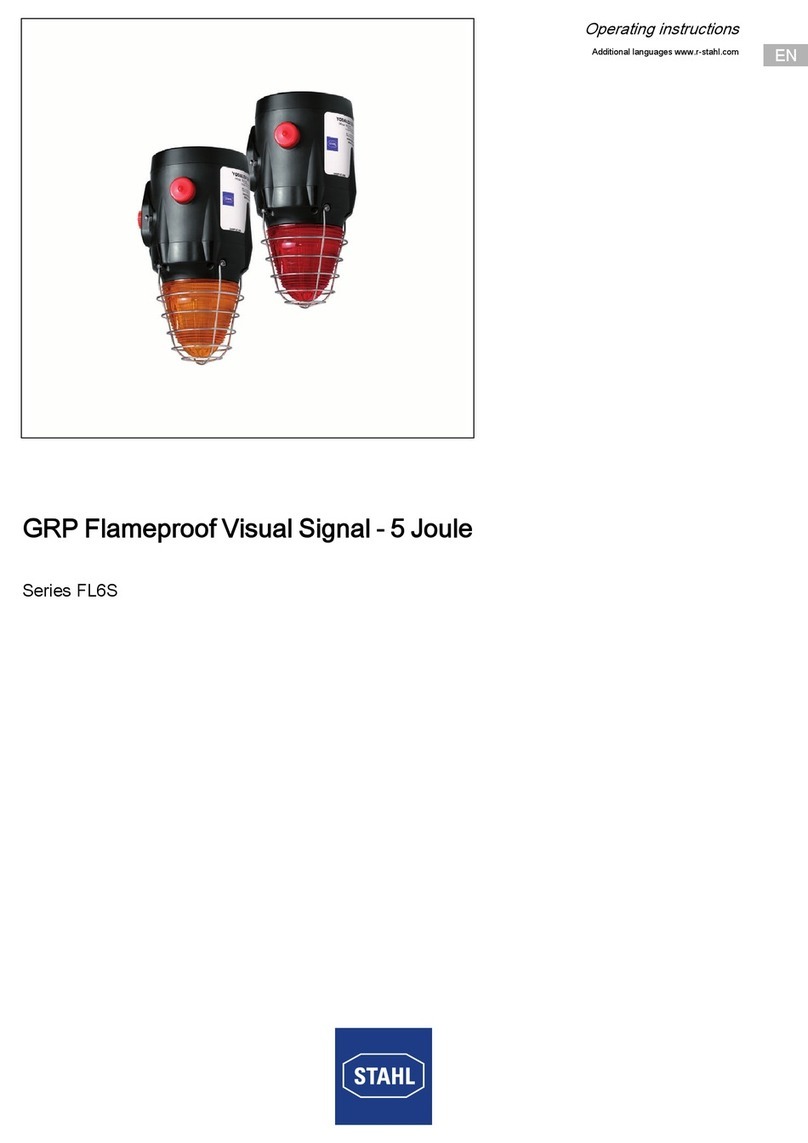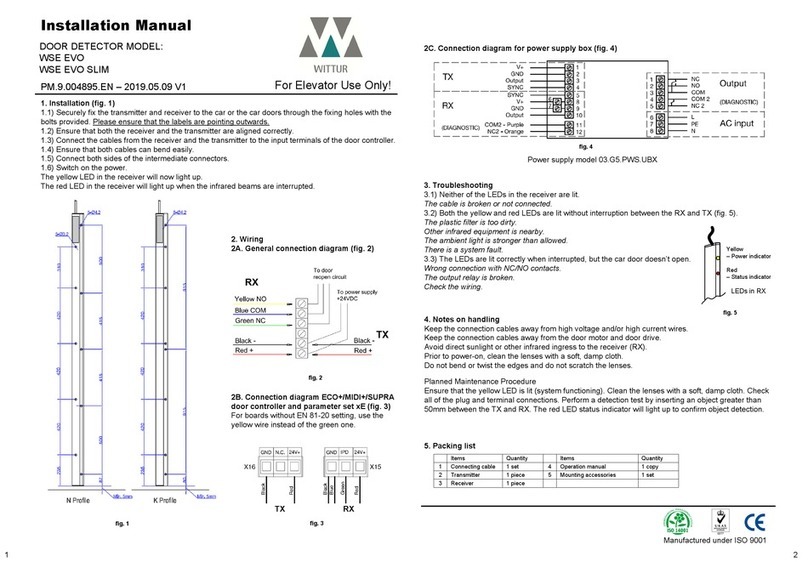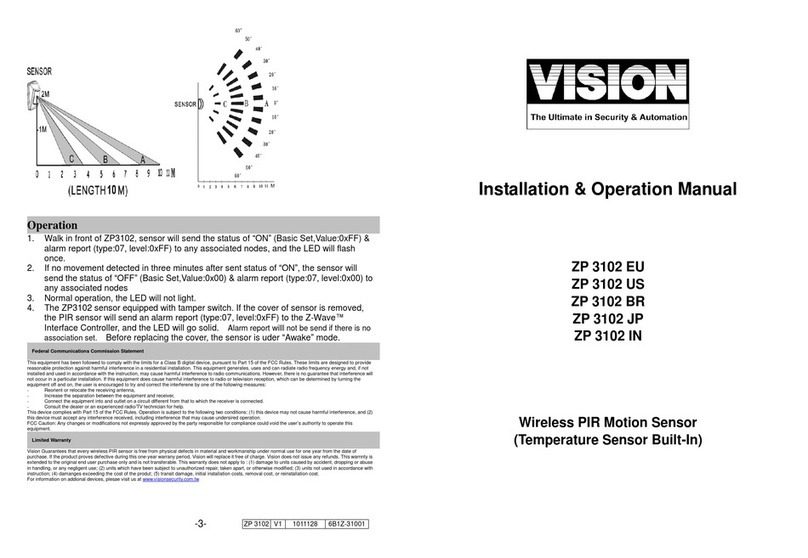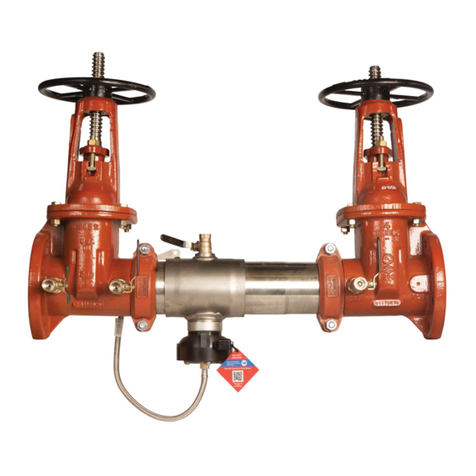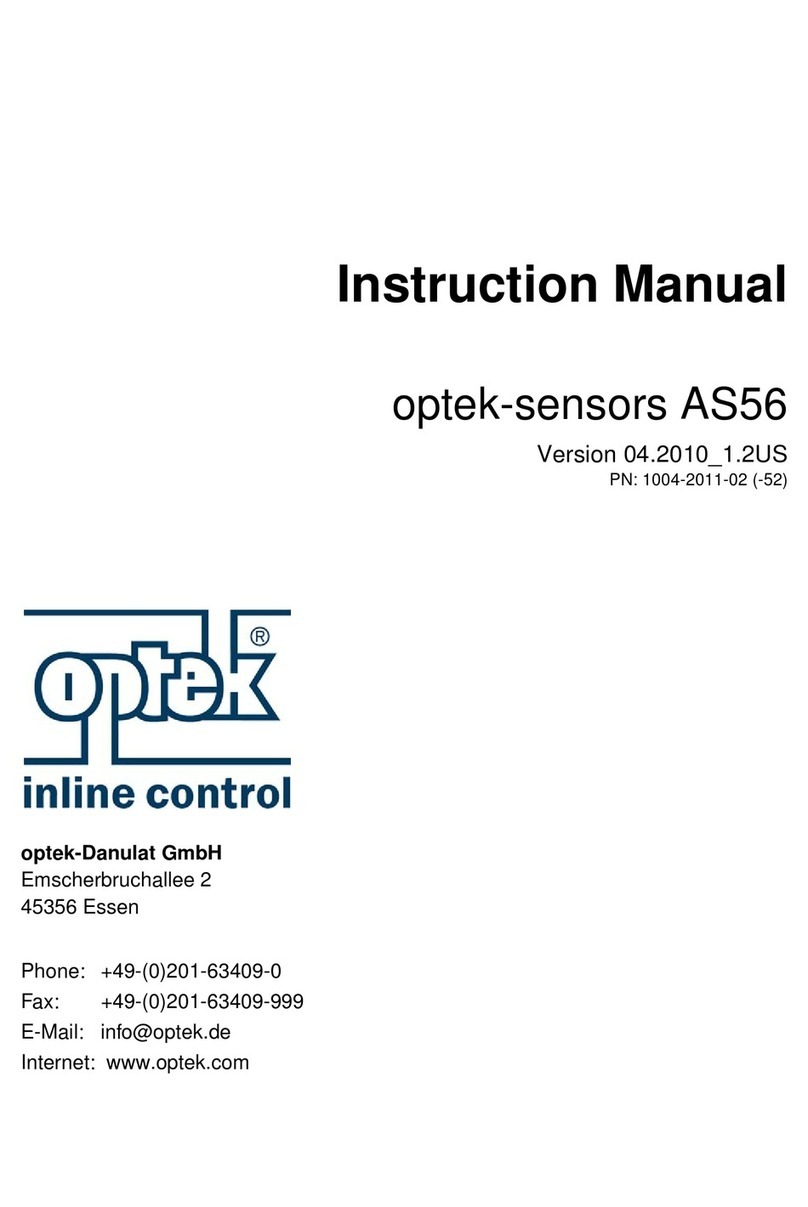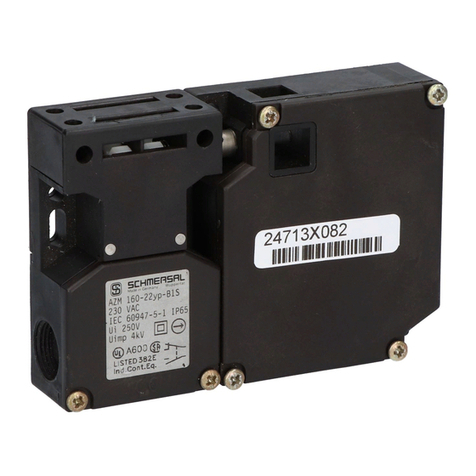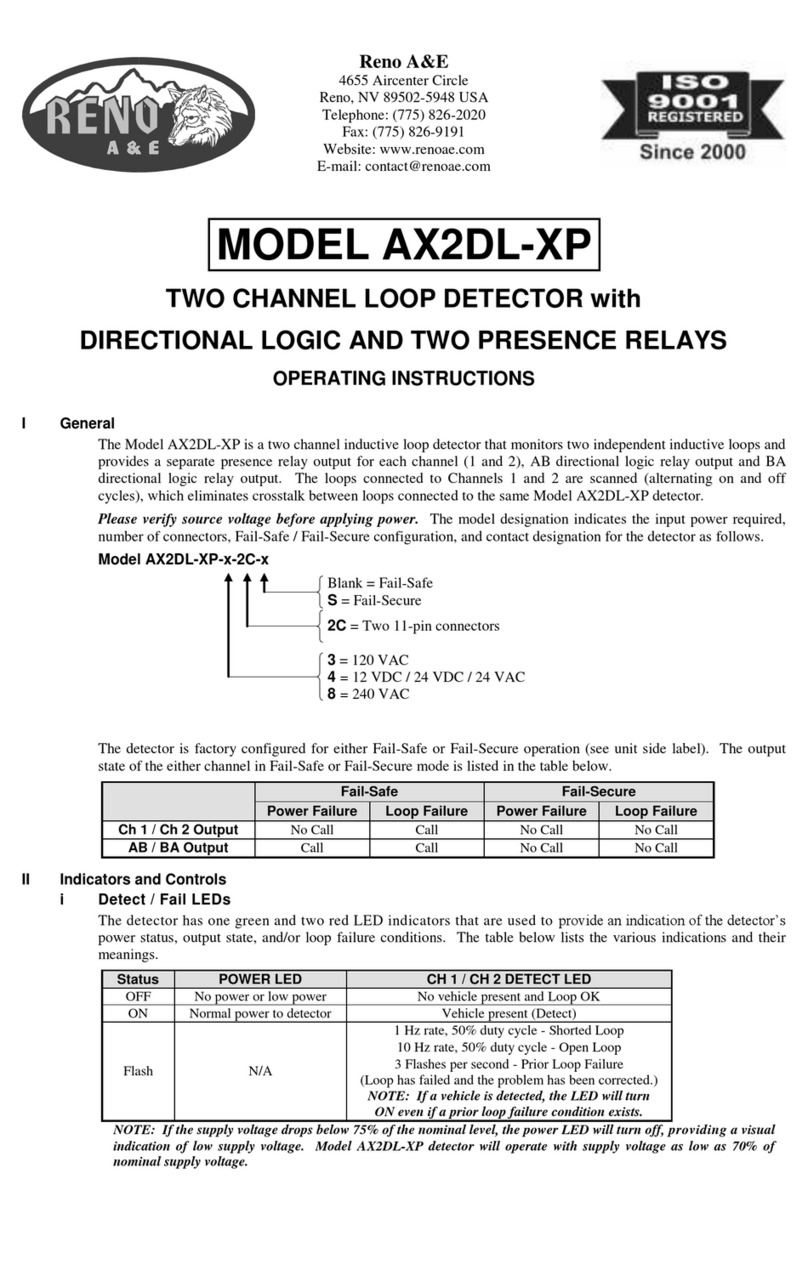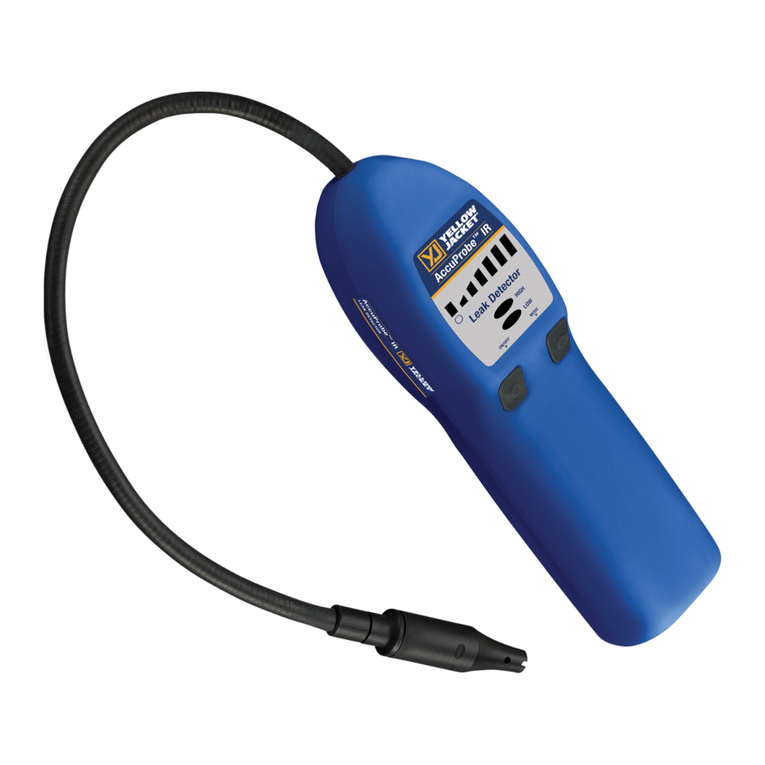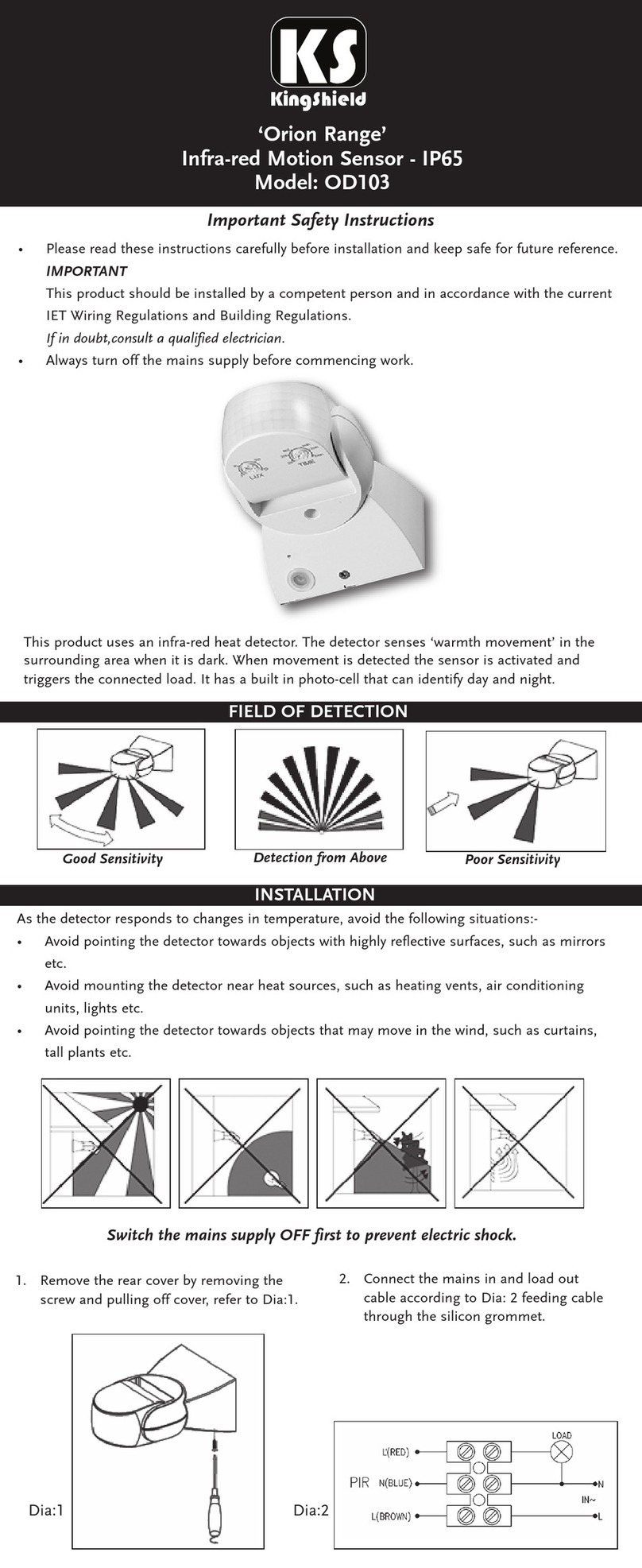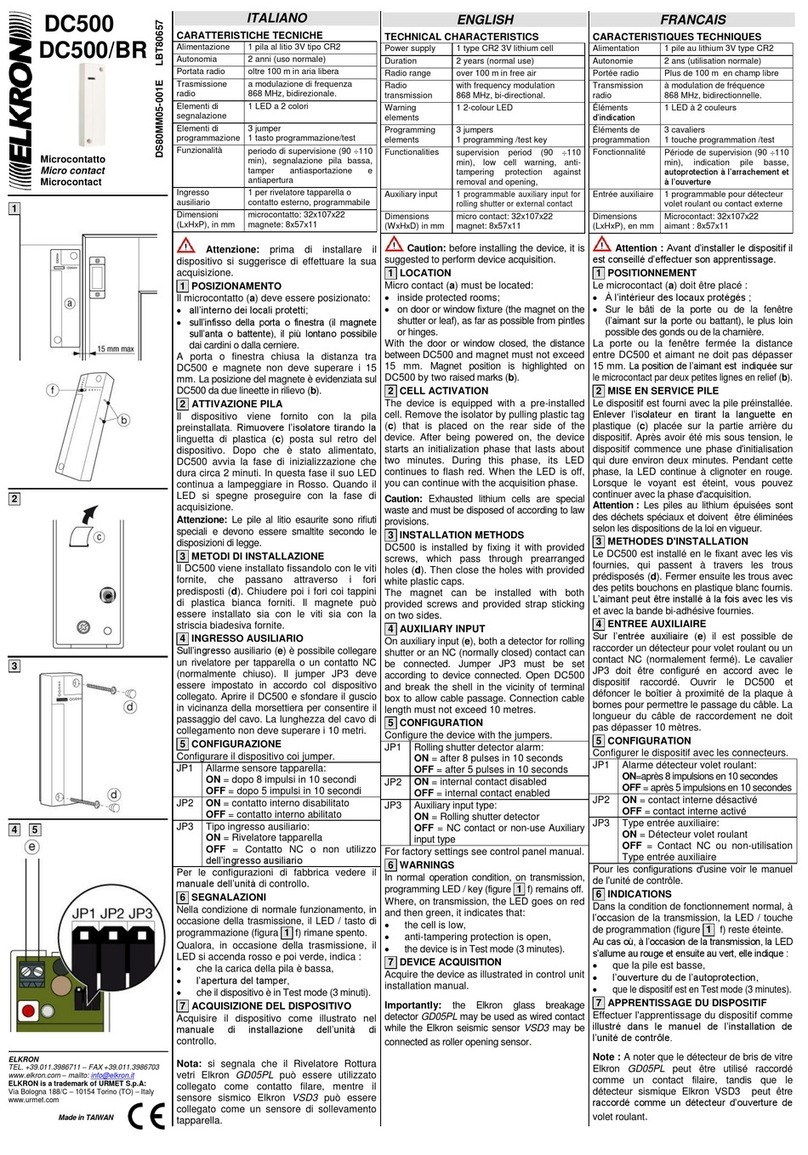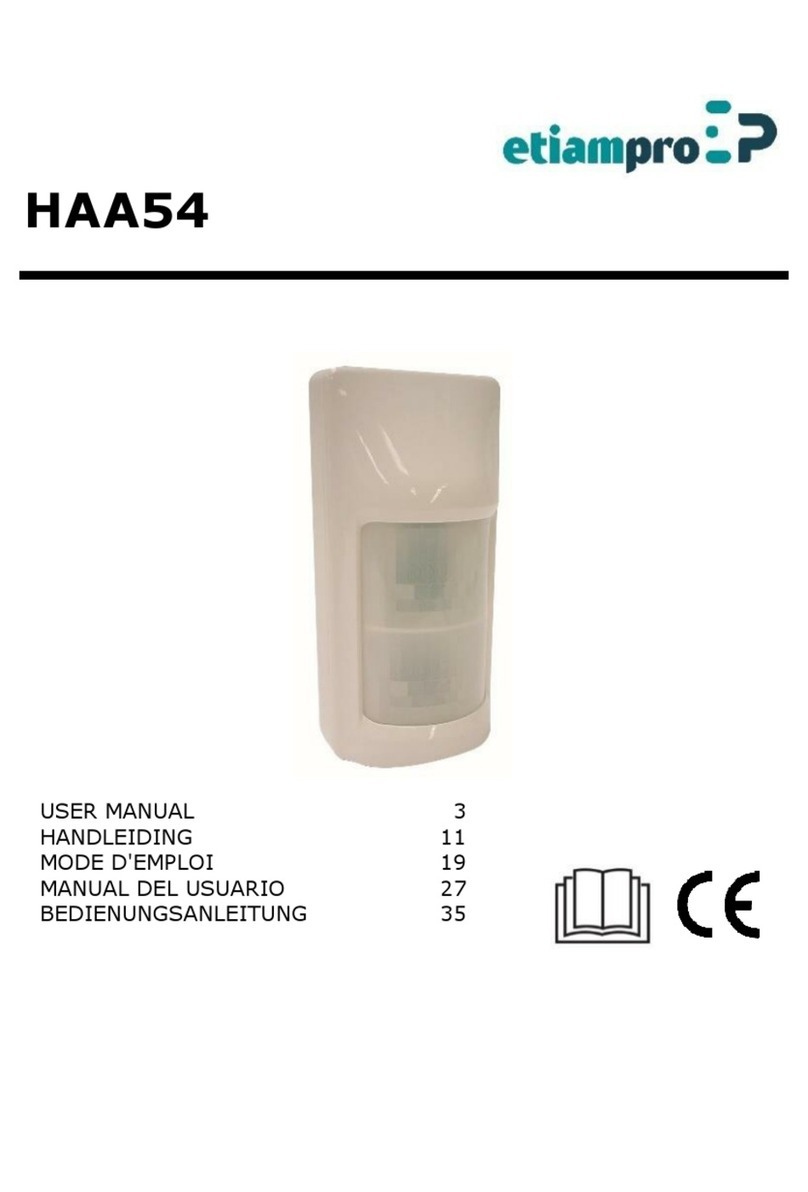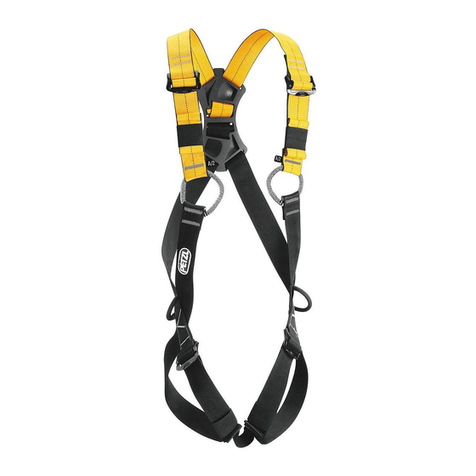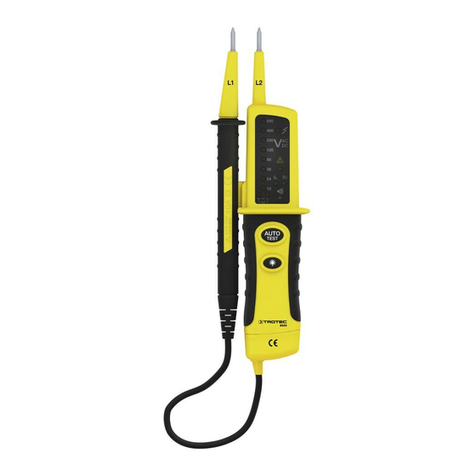Elvira LORNET-24 User manual

U
UL
LT
TR
RA
A-
-C
CO
OM
MP
PA
AC
CT
T
H
HA
AN
ND
DH
HE
EL
LD
D
N
NO
ON
N-
-L
LI
IN
NE
EA
AR
R
J
JU
UN
NC
CT
TI
IO
ON
N
D
DE
ET
TE
EC
CT
TO
OR
R
«
«L
LO
OR
RN
NE
ET
T-
-2
24
4»
»
U
US
SE
ER
R
M
MA
AN
NU
UA
AL
L
C
CE
ER
RT
TI
IF
FI
IC
CA
AT
TE
E

2
U
US
SE
ER
R
M
MA
AN
NU
UA
AL
L
1. Introduction
Theultra-compactnon-linear junction detector“LORNET-24”(further NLJD)isusedfor
searchand location ofelectronicdevices both in activeand switch-off state.
NLJDoperation isbasedon thepropertyofsemiconductorcomponentstogeneratea
responseatthe2nd and 3rd harmonicswhenradiatedbyanUHFprobingsignal.Semiconductor
componentsofartificialoriginwill haveahigherlevelsecondharmonicwhilesemiconductor
componentsofnaturalorigin(e.g.oxidefilms)will haveahigher levelthirdharmonic
respectively.NLJDanalyzesthe2nd and 3rd harmonicsresponseoftheradiatedobjects, which
enablesaquickandreliableidentificationofelectronicdevicesand naturaloxide
semiconductors.
NLJDautomaticallyfindsthebestreceivingfrequencychannelfreeofnoiseanddistortion
providingflawless operation eveninthecomplicatedelectromagneticenvironment.The
frequencytuningalgorithmimplementedinNLJDautomaticallyselectstheprobingsignal
frequencysuchthatthenoiselevelinthe2nd harmonicreceiving channelisheldminimal,while
digitalprocessingofademodulated signalgivesmaximumsensitivity.
There are two types ofradiated signals:
-continuous wavecarrier(CW);
-pulsemodulated carrier with adutycycle44 (pulse).
Thisenablestocombinewidedetection rangeand reliableidentification ofthedevices
found.
Theoutputpower automaticcontrolmodesignificantlysimplifiesoperator’swork. NLJD
simultaneouslydisplaysthe2nd and 3rd harmonicslevelsatitsLEDpanel.Besides, the2nd and
3rd harmonicslevelscanbeestimatedinturnaurallybytheclickrepetition ratereproduced
through abuilt-in loudspeaker orearphonesconnected to apocket-sizereceiver.
AdetectorofthereturnedUHFsignalenvelopeenablesattodetectradiodeviceswith
acousticconverter aurallyatcontinuous frequencycarrier radiation.
2. Specifications
2.1. Radiated signaltypes:
-continuous wavecarrier;
-pulsemodulated carrier with adutycycle44.
2.2. Carrier frequencystep 2 MHzwithin atuningrangeof(2406 … 2414)MHz.
Automaticfrequencyselection. Possibilityofradiation atthecarrier frequencywithaminimum
noiselevelin the2nd harmonicreceiver path.
2.3. Maximumradiated power in theCWmode 0.2 W.
2.4. Peak radiated power in thepulsemode10 W.
2.5. Manualorautomaticcontroloftheradiated power level.
Dynamiccontrolrangeof20 dBdownfromthemaximumoutputpower valuewith11 level
gradations.
2.6. Receivers sensitivitybetterthan –110 dBm(oneLEDlights up attheindicatorscale).
2.7. Receivers tuningfrequencies equalto thetransmitter doubleand triplefrequencies.

3
2.8. Receivingpathdynamicrange 24 dB(10dB–LEDindicatorrange,14 dB–attenuator
adjustingrangeatreceivers input).
2.9. Timeofcontinuous operation with alithium-Ion batteryatthemaximumradiated power:
-3 hours in thepulsemode;
-1.5 hours in theCWmode.
2.10. Equipped device weight≤0.7 kg.
2.12. Operatingconditions:
-ambienttemperature5…40°C.
-pressure 450 …800 mm ofmercury
3. Delivery Set,Designand Accessories
3.1. Thedevice includesunits and accessories stated in theTable1 below. Table1
No. Description Q-ty
1. Aduplexantennaunit with acontrolpaneland abuilt-in container fora
battery
1
2. ChangeableLi-Ion batteries
2
3. Acontainer forbatterycharging
1
4. Acharger foraduplexunit battery
1
5. Areceiver with anadapter to chargeits batteryand earphones
1
6. User Manual, Certificate
1
7. Apackagebagto keep and transportthedevice 1
Fig. 1
1
2
3
4
5
6
7

4
Theappearance ofthedevice is shown in Fig. 1, where:
1- LEDindicators;
2- aduplexantennaunit;
3- acontrolpanel;
4- apower switch;
5- atwisted cover ofthebatterysection;
6- acontainer forbatterycharging;
7- acharger foraduplexunit battery.
Fig. 2
Fig. 2 shows areceiver, an adapter forchargingits batteryand earphones.
Note: Atypeand appearance ofthechargingadapter and earphonescan bedifferentfromthe
shown ones.
4. PurposeofNLJDBasicUnits
4.1. Theduplexantennaunit with LEDindicatorsis used for:
•Analysisofdistortion andinterferenceintheinstrumentreceivingpath, whichismadeeach
timethetransmitter isswitchedon. Therefore,ifaninterferingsignalappearsduringoperation
(inacomplicatedelectromagneticenvironment)it isnecessarytoturnNLJDtransmitter off
and on fromtimetotimethus selectinganoptimalfrequencyautomatically,providingthebest
sensitivityand detection rangeofsemiconductorcomponents.
•Generation UHFsignal,receiptand digitalprocessing ofthe2
nd and the3
rd frequency
harmonics. Simultaneous displayofthe2nd and the3rd harmonicslevelsgivestheopportunity
todistinguish withahighreliabilitybetweensignalsofartificialsemiconductorsintegratedin
electronicdevices andnaturalcorrosiveones which appear atoxidation ofconnecting points of
various metals.
•Demodulation ofthe2nd and 3rd harmonicsresponse,theiramplification tothelevelrequired
fortappingbothtoearphonesand abuilt-inloudspeaker.Anoperatorcancontrolsound
volume.Anoperatorcanlistentodemodulatedsignalsofthe2nd harmonicfromlower or
upper receiverranges in turn.
•Indication ofthereceiverpower leveland levelsofthe2nd and 3rd harmonicsofthesignals
received (Fig. 3).
Fig. 3 LEDIndicators
Transmitter
power
2-nd harmoniclevel
3-rd harmoniclevel

5
4.2.Flexiblejointoftheduplexantennaunit withahandleisdesignedtotransformtheunit
intotransportation position (Fig.4).Besides, it helps theoperatortofixtheantennaina
position convenientforsearch.
Fig. 4 FlexibleJoint
4.3.Thecontrolpanelwithapower supplyisusedtocontroloperation ofNLJD.Itconsistsof
thehousing usedasanarmintowhichachangeablebatteryisput.Thecontrolboard, buttons
foroperation modescontroland displayLEDsareplacedinthehousing.Thecontrolbuttons
aredividedintotwogroups bytheirfunction:«AUDIO»placedintheupper halfofthepanel
and «POWERRF»in thelower half. Thecontrolpanelis shown in Fig.5.
5.
Fig. 5 ControlPanel
Flexiblejoint
handle
Flexiblejoint
4 Transmitter ON button
2 Switch button to listen by
phones orloudspeaker
3 Button to switch be-
tween PULSEand CW
modes
7 Receiver attenuator
controlbutton
8,9 Transmitter power
controlbuttons
10,11 Volumecontrol
buttons
5 Power slide-typeswitch
6 Receiver attenuatorindica-
tor
1 Switch button to listen
to responseby2nd or3rd
harmonic

6
4.4. Functionsofcontrolpanelindicators:Continuous lightingofanyindicatorcorresponds
to«ON»position, absence oflighting–to«OFF»position. Simultaneous flickeringofall
controlpanelindicators shows abuilt-in batteryis dischargedand needs tobecharged.
4.5. Batterycharging oftheduplexantennaunit istobemadewithabatterycharger included
tothedeliverysetonly(Fig.1).Usingother chargersisnotallowed.Forchargingit is
necessarytotwistacover attheedgeofthearmoff,removeabatteryand place it intothe
container forcharging(Fig.1). Connectthecontainer to thecharger.
Whileacharger isconnectingtothepowermainsaredLEDislightning atitshousing.When
abatteryiscompletelycharged, theredLEDgoesout,and agreenLEDlightsup. Charging
timeofafullydischarged batterydoes notexceed6 hours.
4.6. Controlelements ofthereceiver are shown in Fig. 6.
Fig. 6Receiver
4.7. Receiver Operation Procedure
•Chargeabuilt-inbatterycompletelyusingtheadapter includedtothedeliveryset,here
CHARGE indicatorgoesout.
•Connectearphones to thecorrespondingsocket.
•Turn thereceiveron byaslide-typeswitch, herePOWERLEDlights up.
•Setacomfortablevolumelevelusingvolumecontrol.
•Ifthereceiver isturnedon whenNLJDisoff,thenthere isanoisesignalonlyinthe
earphonesathigher volume.Afterturningonacousticindicatorsignalscorrespondingtothe
operatingmodeofNLJDappear in theearphones.
5. Safety Measures
Socketfor
ea
r-
phones connec-
tion
Powerindica-
tor(lights up
whenON)
Socketforadapterconnec-
tion
Charging indicator
(
lights
duringcharging)
Volumecontrol
Powerslide-typeswitch

7
5.1. NLJDistobeoperatedonlybypersonswho havebeendulyinstructedforsafety
measures whileworkingwith electricand measuringdevices with open RFenergyradiators.
6. OperationOrder
6.1.RemoveNLJDfromthepackage.Ifnecessarychargethebattery.After transportation at
negativetemperaturesit isnecessarytokeepNLJDintheswitch-off stateatroomtemperature
atleastfor30 minutes.
6.2.TurnNLJDon bythetype-slideswitchplacedon thearm.The2nd and 3rd indicatorson
thecontrolpanelwill lightup, indicatingthatNLJDhasbeenpoweredon.OneyellowLED
shouldbelightningon theantennaunit (a circlescaleoftheprobingsignalpower indicator).
Itsinitialposition corresponds tothemaximumpower oftheprobingsignalintheautomatic
mode.Heretheprobing signaltransmitter isoff(it isturnedon afterpressingPWRbutton
only).The2nd and 3rd harmonicsindicatorsshouldnotlight(flashingofthefirstLEDsofthe
2nd and 3rd scalesispermitted).Maximumpower levelcanbechangedusingthepower control
buttons ofthetransmitter (Fig.5).
6.3.Turntheprobingsignaltransmitter on pressingPWRbutton. Thiswill switchon the
transmitter pulsemodeand theautomaticmodeofsignalpowercontrol.Theradiatedsignal
power will changedependingon asignallevelatthe2nd harmonicreceiver output.In thegiven
modeacousticinformation (clicks)ofthe2nd harmonicresponseisappliedtotheloudspeaker
orearphones.
Whenswitchingon3-RDmodebypressingLSTon thecontrolunit,theoutputpowerofthe
transmitter isadjustedautomaticallydependingon asignallevelatthe3rd harmonicreceiver
output.Acousticinformation ofthe3rd harmonicresponseisappliedtotheloudspeaker or
earphones.
To switchover tothemanualmodeoftheprobing signalpower control(MNLindicatorlights
up)press oneofthepower control buttons whentheprobingsignaltransmitter hasbeenturned
on.
Turntheprobingsignaltransmitter offandthenturnit on usingPWRbutton forareverse
switch over.
Ifit isnecessaryto tapthe3rd harmonicresponseturnon 3–RDmodeusingLST button on the
controlpanel.
Duringoperation inpremiseswithalotofelectronicdevicesit isnormallyrecommendedto
work atdecreased power oftheprobingsignal.
Theoptimumleveloftheprobingsignalis reached experimentally.
Press RFbutton toswitchover totheCWmode(CWLEDlights)fromthepulsemode
(PULSELEDlights)andvice versa.
6.4. Simultaneous flashingofall indicatorson thecontrolpanelindicatesthatthebatteryis
discharged. In this caseturn off thepower, untwistacoverattheedgeofthearmoff,removea
battery, placeit into thecontainer and chargeusingthecharger.
6.5. Ifaresponsesignalistobetappedbyearphones, press thecorrespondingbutton on the
controlpaneland turn thereceiver on.
Attention:
1)WhileoperatingNLJD constantlymonitorbatterystatechargingit in-time(bythe
indicators signal). NLJDmustbekeptwith abatterycharged.
2)Chargingshouldbedonewithachargerincludedintothedeliverysetonly,usingof
unauthorized chargers arestronglyprohibited.

8
7. SearchRecommendation
7.1. Ifpossibleremoveelectronicdevicesfromtheroomexamined. Ifit isimpossible,
examination should bedoneatadecreased radiated power.
7.2. Setmaximumradiated power leveland oneoftheoperation modes ofthereceiver.
7.3. Analysisofthereceived2nd and 3rd harmonicslevelsismadebothbynumber ofLEDs
lightningon thecorrespondingindicatorscaleandbyclicks repetition rateintheloudspeaker
orearphones.
7.4. Formore accuratelocation oftheobjectunder searchingdecreasethetransmitter output
power orreceivers sensitivityusingATT button.
7.5. Whenanartificial р-ntransition isfound oneshall normallyseestablelightningofthe2nd
harmonicindicatorLEDs.Whilerapping atthesuspectedplace ofap-ntransition, readingsof
LEDs do notchange.
7.6. Whenanatural р-ntransition isfound, oneshall observestablelightningofthe3
rd
harmonicindicatorLEDs. Whilerappingattheexaminedsurface intensively,readingsof
indicators bythe3rd harmonicwill change, as arule.
Thesearchtechniqueoffereddoesnotreflectall nuanceswhichmayappear ineachexact
case, and represents arecommendation only.

9
C
CE
ER
RT
TI
IF
FI
IC
CA
AT
TE
E
1. General
1.1. Before operation studyUser Manualfor«LORNET-24»thoroughly.
1.2. TheCertificateisincludedinthedeliverysetand shouldbealwayskeptwiththe
instrument.
1.3. Ifthedevice issentforrepairortoadifferentplace duringoperation theCertificateistobe
shipped with theinstrument.
1.4. Marks in theCertificateshould bedonein-time.
1.5. All recordsintheCertificateshouldbemadebyink only,distinctlyandcarefully.All
unauthorized erasures, blots and corrections are notpermissible.
1.6. Itis forbidden to makeanynotes orrecords in thefields and on thecover oftheCertificate.
2. Delivery Set
Table1
No. Description Q-ty
1. Aduplexantennaunit with acontrolpaneland abuilt-in container fora
battery
1
2. ChangeableLi-Ion batteries
2
3. Acontainer forbatterycharging
1
4. Acharger foraduplexunit battery
1
5. Areceiver with anadapter to chargeits batteryand earphones
1
6. User Manual, Certificate
1
7. Apackagebagto keep and transportthedevice 1
3. Warranty
3.1. Warrantyperiod for«LORNET-24»is 18 months upon supplyto thecustomer.
3.2. Lifetimeis 6 years.
3.3. Ifthedevicefailsduringwarrantyperiod providedthecustomer hasfollowedall the
operation, transportation and storagerules, themanufacturer istomaketherepairfreeofcharge
orreplace thedevice.
3.4. Warrantydoes notcoverpower elements.

10
4. AcceptanceCertificate
5. PackageCertificate
ACCEPTANCECERTIFICATE
Ultra-CompactHandheld Non-Linear
Junction Detector«LORNET-24»No _____________
nameserialnumber
ismanufactured and accepted accordingtoobligatoryrequirementsofstate
standards, currenttechnicaldocumentation and isfitforservice.
Technicalinspection
__________
stamp date, month, year
PACKAGECERTIFICATE
Ultra-CompactHandheld Non-linear
Junction Detector«LORNET-24 No _____________
nameserialnumber
Packaged by: «ELVIRA»Production JSC
accordingtotherequirementsstated inthe given technicaldocumentation.
date, month,year

11
6. Claims Data
Inthepackageisdamagedduringtransportation claimsareappliedtothetransportation
companyaccordingto theapplicableprocedure.
IfthedeliverysetisnotcompleteortheNLJDisdamaged, providedthepackageisnot
damaged, anActis madetogetherwith arepresentativeofthemanufacturer.
Ifadefectappearsduringwarrantyperiod, thecustomer istosend NLJDtomanufacturerwith
an accompanyingletter, statingthereason oftheclaim.
All claimswithabrief description ofencounteredproblemsand measurestakenare recordedin
Table2.
Table2
Claim content Reason, measures taken Notes


